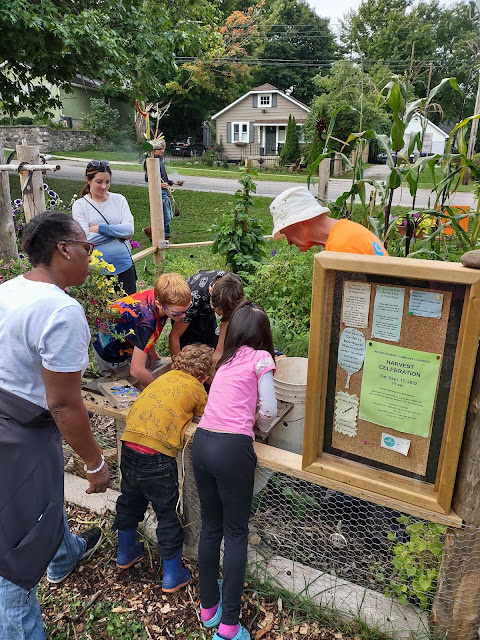I have been finding my sea legs this year, not just for the
storms and high waves but also for the impermanence of the waters of life. My ancestors were island people, surrounded
by water and accustomed to tides. Being surrounded by water made them vulnerable
to invasions and for hundreds or perhaps thousands of years their story was one
of being pawns in the grand chess game that the nobility of Europe played. Eventually, my ancestors took to the seas and
created a huge navy to protect themselves and then to invade countries all over
the world and re-create their own experience in the bodies of other people. They came to Turtle Island and devastated the
land with the greed of extraction that decimated and imprisoned those peoples
who were Indigenous to these territories.
My parents came to Canada from England in the 1950’s by sea
and I was born here a little later. They
brought some stories on the journey but didn’t pack most of them in the large
trunks that they brought to their new home.
Stories of family members who brought shame on the family were kept
secret until they could no longer remain submerged and then they were passed to
me.
Over the past two years I have been learning more about my ancestors and the lives they lived. I have learned about the home town of my parents, grandparents and 5 great-grandparents, Oldham, Lancashire. I have learned that my great great-grandparents were drawn to this town to find work in the cotton mills that sprung up like dandelions during the Industrial Revolution. The land around Oldham is hilly and not suited to agriculture while full of coal that was extracted to drive the steam engines of the mills. The weather is damp which is good for keeping the fluff of cotton mills less airborne. The cotton came from America. We now know that for part of the time, it was grown and picked by slaves to keep it cheap. My ancestors who worked 12 hour days in the mills 6 days a week were paid by how much they produced and lived in quickly thus poorly constructed housing erected for the influx of workers. Not slaves and yet not free either. A few men got exceedingly rich. Most lived hard, short lives.
Thomas Hubl who has pioneered work in healing ancestral and collective trauma describes the past as something that is frozen. The traumas that my ancestors couldn’t cope with were pushed down into the unconscious where we couldn’t see them. However, they still effected how we saw and see life like a filter that we see life through. Discovering Hubl’s work this year has been very transformative for me. He describes healing as the liquefication of these frozen traumas. Once they are liquefied, we can begin to digest the now conscious information and eventually integrate it. This seems like good work for me to do at this point in my life. This seems like essential work to be doing for our world. Frozen, unconscious traumas effect everything we do and make it impossible to create healthy change. One can see traumas being repeated and perpetrated everyday on the news and in our personal lives.
As the traumas become liquefied, the ground, like melting
permafrost heaves and sinks. We are not
who we thought we were. I am not who I
thought I was. Personality traits
suddenly transform into ancestral responses to trauma with long histories
behind them. The undigested traumas of
our ancestors live within us. But, of equally
importance, the resiliency of our ancestors lives within us. With this resiliency, perhaps it is possible
to liquefy, digest and integrate these traumas.
This is not easy to do on one’s own.
Hubl feels it is in fact the work of groups that consciously witness and
support each other in healing. He feels
that the energy field created by so many people (the “we-space”) is the fuel to
allow for the healing of these ancestral and collective traumas.
This work excites me and I am learning more about it. I am experimenting with doing it myself and with groups on-line that Hubl’s Pocket Project hosts. I am reflecting on how this work could impact the work of Truth and Reconciliation in Canada. I can see how non-Indigenous people here have a lot of work to do to heal these ancestral traumas that drove people from around the world to these shores and airports. This is part of the truth work and I believe it is necessary so that we can impress upon our governments that it is not okay to maintain systems and laws that oppress Indigenous people. But, if we still believe unconsciously that we are about to be invaded, that there is not enough to go around, that we are fragile victims, then we will easily accept governments keeping Indigenous people living with no potable water, with substandard housing, education and health care. It will look as though there is no solution because we are looking through the unconscious filter of being invaded and imprisoned ourselves.
Liquefying these traumas can feel like rough seas where the
horizon is hidden. We don’t know what
will happen if we melt the solid ground of trauma. What sea monster may arise? Who will we be if we do this? Perhaps we will become good ancestors if we
do this. Perhaps, we will be the ones
who bring healing to our ancestors and to the futures of our children,
grandchildren and great-grandchildren. We have to summon up our courage and all the
love we can muster to do this work. We
have to find our sea legs.




.JPG)
.JPG)

.JPG)
.JPG)

.JPG)

.jpg)

